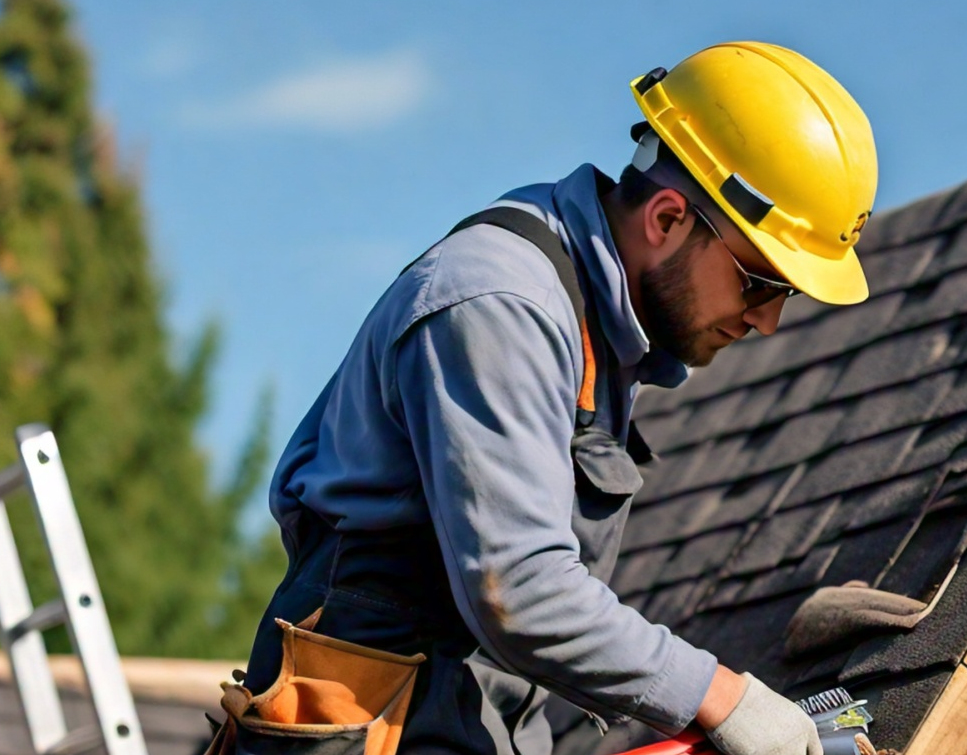Replacing a roof can be a big expensive job. Fortunately, an asphalt roof typically lasts from 25 to 30 years, so you shouldn’t have to do it very often. But recently in places like Florida, insurance companies are drastically raising rates for houses with roofs over 15 years old. So, a roof replacement may be cost effective even if the roof is not really in need of replacement yet.
Understanding Roofing Costs
The cost of roofing is influenced by various factors, including materials, labor, the type of roof, and the size of the project. High-end materials like slate or tile can significantly increase the project’s cost, as can complex roof designs that require more installation time and labor.
Factors that Influence Roofing Costs:
- Materials: Asphalt shingles are typically the most cost-effective, while metal, slate, and tile are more expensive but offer longer lifespans and distinct aesthetic appeal.
- Labor: Costs can vary significantly depending on the region and the expertise of the contractors.
- Roof Type: Low pitched roofs often cost less than high pitched roofs due to the differences in installation complexity and materials used.
- Project Size: Larger roofs require more materials and labor, increasing overall costs.
Smart Spending Strategies
Setting a Budget
Start by setting a realistic budget that accounts for all potential costs, including materials, labor, permits, and a contingency fund for unexpected expenses. This budget should align with your overall financial goals and priorities.
Prioritizing Needs and Wants
Evaluate what you need from your roofing project versus what you want. For example, while premium materials may be desirable for their appearance, more cost-effective options might also meet your needs. Prioritizing necessities can help you make the most of your budget without sacrificing quality.
Financing Options
Financing a roofing project can be done through various means, each with its pros and cons. Personal savings are the most straightforward option, avoiding debt and interest. However, home equity loans or personal loans can be viable alternatives for those needing to spread out the cost, offering the ability to finance the project over time. Some roofing companies offer financing but you need to compare their rates to other options.
The Role of Maintenance
Regular maintenance is key to extending the life of a roof and preventing costly repairs down the line. Incorporating routine inspections and maintenance into your financial plan can save money in the long run. Simple actions like cleaning gutters, inspecting for damage after severe weather, and timely repairs can protect your investment.
Navigating the Decision-Making Process
When deciding about your roofing project, start by evaluating different materials and contractors. Seek multiple quotes to ensure you’re getting fair pricing, and read reviews to gauge the quality of work. Balancing cost, quality, and value is essential—opting for the cheapest option may lead to higher expenses in repairs and replacements down the road.
Smart spending on roofing requires a balance of upfront costs, long-term value, and regular maintenance. By understanding the factors that influence costs and exploring financing options carefully, you can make informed decisions that align with your financial planning goals. Remember, investing in your roof is not just about protecting your home or business—it’s about making a strategic financial decision that benefits your future.
How Long Does it Take?
According to the experts at Kimberlin Family Roofing, “most roof replacement projects take 1-2 days to complete. However, this can change depending on current weather conditions, the size and style of the roof, access, and the roofing materials we are installing.”
Of course, it also depends on how busy your local contractor is. Just after a severe storm it might be difficult to get a roofer to come out because they are so busy. So that is a good reason to be sure your roof is maintained in good condition before the storm hits.
How Much Does it Cost?
It is a good idea to get three different quotes when contemplating a roof replacement. Costs can vary drastically depending on several factors including materials, location, whether it is a one story or two story home, and even how busy the roofing company is. So be sure you are comparing the same materials and how long it will take for the company to get started.
According to This Old House, “An asphalt shingle roof for a 2,000-square-foot home with a 7/12 slope costs an average of $6,000–$9,800, though your rate may differ.”
Shingle Roof Cost by Square Foot
| Roof Size | Cost of Asphalt Shingles | Cost of Shingles + Installation |
|---|---|---|
| 1000 sq ft | $1,700 – $3,000 | $3,652 – $5,373 |
| 1200 sq ft | $2,040 – $3,600 | $4,382 – $6,447 |
| 1500 sq ft | $2,500 – $4,500 | $5,478 – $8,059 |
| 2000 sq ft | $3,400 – $5,600 | $5,994 – $9,791 |
| 2500 sq ft | $4,250 – $7,500 | $8,544 – $12,537 |
| 3000 sq ft | $5,100 – $9,000 | $10,112 – $14,830 |
| 3500 sq ft | $5,950 – $10,500 | $11,756 – $16,969 |
Generally the roofer will tear off all the old roofing, and haul off the old debris. Then they will examine the underlying boards and if they find any hidden damage or rot they may have to charge more to cover the additional labor and materials, so it is good to discuss how they will handle this if it occurs. A steeper roof is more difficult to work on and may cost more.
Once the old decking is cleaned and examined the new roof can be installed. These days local codes typically require a special weather proof “peel and stick” underlayment barrier be applied first, followed by the felt paper, and then the asphalt shingles. So, installing a new roof is quite labor intensive. In order to get your roof done in a single day, there are generally several roofers working at the same time on your roof. Generally, labor makes up about 60% of the total cost of your new roof.
How to Save on Roof Costs
If it’s allowed in your state and your roof’s foundation is solid, you can sometimes apply a new layer of shingles without having to remove the old one, saving on removal and disposal costs. Generally, roofers don’t recommend this, it often doesn’t look as nice when finished and you can only put one additional layer on a roof (i.e., two total). In addition, you can’t tell what the boards look like under the shingles so there may be hidden damage.
Hiring roofers in the off-season when they aren’t as busy can save money. This is typically in the late fall or early spring but may vary depending on where you live.
You May also like:
- Neglect These Essential Home Repairs At Your Peril
- Moving into a Smaller Space? Here are 17 Clever Downsizing Tips to Know
- What Causes Drafty Windows?
- 6 Tips for Saving Money on Home Repairs
- Low-Cost Ways to Keep Your House Cool
Image courtesy of Meta AI.




